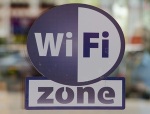 With more mobile network operators using Wi-Fi to complement their radio access networks, one begs the question: how’s “carrier Wi-Fi” different from the one I have at home? What exactly is “carrier Wi-Fi”?
With more mobile network operators using Wi-Fi to complement their radio access networks, one begs the question: how’s “carrier Wi-Fi” different from the one I have at home? What exactly is “carrier Wi-Fi”?
While there is no proper, or exact, definition for carrier Wi-Fi, I think it’s more important to realize that the definition has been evolving with time. Personally, I think carrier Wi-Fi is focused on two tracks. First, provide the mobile subscriber a better user experience including easy access to the Wi-Fi network and better quality of service; and second, enable the service provider to scale and manage a network of Wi-Fi access points that can reach into the tens even hundreds of thousands of units. From this point of view, carrier Wi-Fi opens a wide door for differentiation in both equipment ecosystem and service offering.
To home in on some of the features that make Wi-Fi carrier Wi-Fi consider the following:
1- Scalability: some carriers’ Wi-Fi networks comprise tens of thousands of access nodes. Each access node has to support a large number of subscribers on its own (can be a few hundred). The ability to scale a Wi-Fi network requires specific functions and features and consequently, a whole number of features fall under the ‘scalability’ headline such as network management and hardening against interference.
2- Wide area mobility: the ability to maintain a session while moving between Wi-Fi access nodes is an important feature in carrier deployments.
3- Network management: support for thousands of access nodes for important functions like fault, configuration, accounting, performance and security (FCAPS).
4- Carrier-grade security: the Wi-Fi network is hardened to protect it from common security threats (intrusion detection/prevention, denial of service, detection of jamming, logging of events and notification, black lists, etc.). The carrier Wi-Fi network is better protected from external hackers.
5- Integration with the RAN network: backhaul Wi-Fi traffic to the mobile network core where a number control functions can be exercised such as billing, policy, authentication, addressing, mobility management, roaming, content filtering, and lawful intercept.
6- Support for Hotspot 2.0 (marketed as Passpoint by the Wi-Fi Alliance): based on IEEE 802.11u, this feature improves access to the Wi-Fi network through the mobile SIM frees the users from having to think about Wi-Fi access: it removes the need to worry about SSID and authentication. The experience becomes seamless as Wi-Fi integrates with the RAN service.
7- Quality of Experience and Service: The ability to control priorities of service on a customer and/or application basis. Furthermore, to accommodate the wholesale model for neutral hosts, a number of features are available to support QoS/QoE at a level specific to a certain service provider.
8- Network features: carrier Wi-Fi support a number of networking features to provide enhanced services (e.g. multiple SSIDs, 802.1Q VLAN, multicast, SNMP traps for network management, etc.). The networking and management features allow for a neutral host model whereby a single Wi-Fi network operator to build a venue and wholesale to a number of operators.
8- Power, antennas and other enhancements: the access nodes feature full range of output power and improved receiver specifications. Enhanced antennas are used, sometimes with built in intelligence to improve performance in a noisy environment.
9- Hardened access nodes: hardened mechanical enclosure and different mounting options suitable for operator deployments.
From operational and evolutionary perspectives, greater integration with the wireless network to enable policy definition and enforcement will increase the utility of carrier Wi-Fi networks which will make greater use of the 5 GHz band as more devices get equipped with 802.11ac.
The rise of carrier Wi-Fi did not follow a straight path and there were many different attempts in the past at large-scale Wi-Fi network. Many fell through for commercial reasons. However, in the present time, mobile network operators are feeling the heat from high demand on capacity coupled with limited spectrum available for broadband data services. This opened the field for carrier Wi-Fi to significantly expand. Infonetics states that carrier Wi-Fi equipment revenue increased by 53% from 2011 to 2012 and predicts the revenue to reach $3.7 billion in 2017 primarily driven by mobile operators deploying carrier Wi-Fi for data offload. Leading demand is Asia Pacific region, most particularly China, Indonesia and India. Supply is led by Cisco which has the highest market share followed by Ruckus Wireless and Ericsson.
The bottom line is that carrier Wi-Fi is continuing to evolve in a matter that improves the user experience: less congestion, faster download time, better video quality, and fewer service interruptions. In short, carrier Wi-Fi is here to stay.
